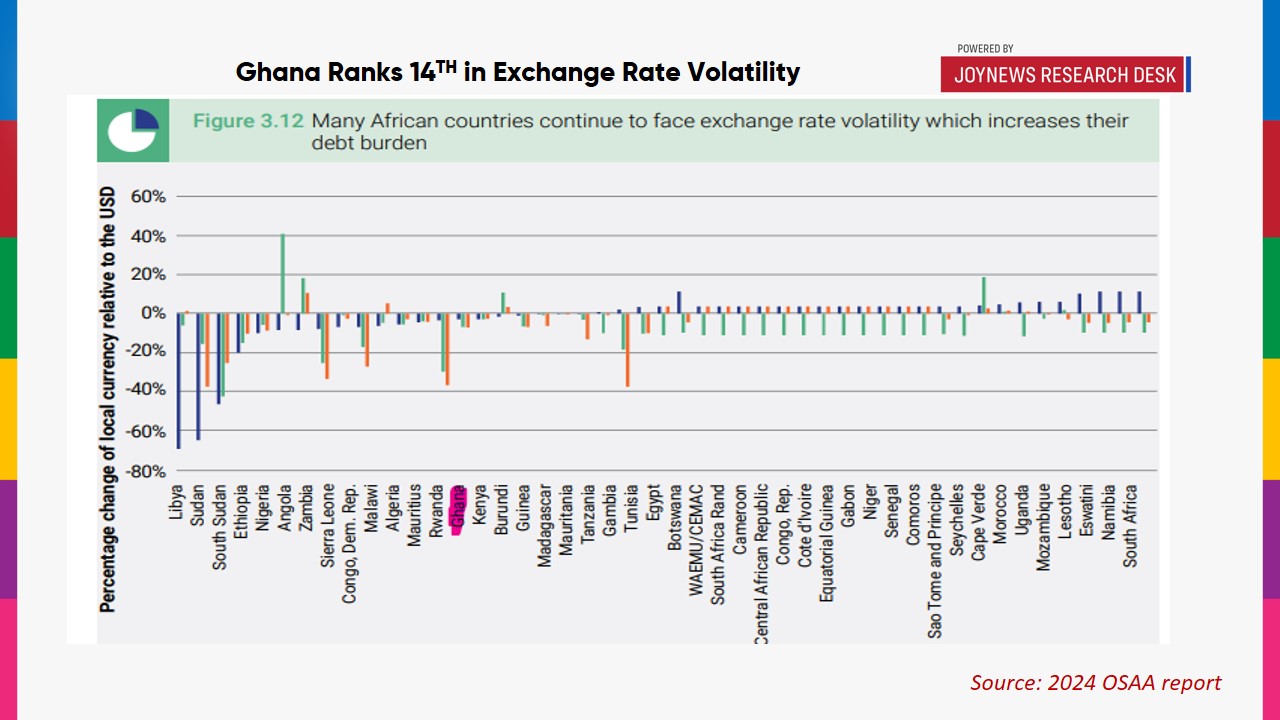
Ghana's economy is currently navigating a complex landscape marked by both challenges and opportunities. The country faces significant difficulties due to its heavy reliance on dollar-denominated debt, which constitutes over 80% of its external debt. A recent UN report from 2024 underscores Ghana's vulnerability to exchange rate volatility, ranking the country 14th in Africa for such fluctuations [67908535]. The surge in debt servicing costs has been alarming, rising from GHS 5.5 billion in 2019 to GHS 15.8 billion in 2024, reflecting the impact of the depreciating cedi against the dollar [67908535].
As of September 2024, Ghana's external debt reached GHS 470 billion, with the exchange rate climbing from 12.0356 GHS/USD to 15.8 GHS/USD. This depreciation has led to a 31.27% increase in dollar-denominated debt, further straining the nation's finances [67908535]. The escalating costs of servicing this debt are limiting funding for critical sectors such as health and education, exacerbating the economic situation for many Ghanaians [67908535].
In a more positive light, Ghana's gross international reserves reached US$8.982 billion by December 2024, marking an increase of $1.101 billion from the previous month. This rise is notable considering the reserves were at $6.31 billion in January 2024, and fluctuated throughout the year, indicating some recovery in the economic landscape [d1bf823c]. Additionally, the trade balance recorded a surplus of $4.98 billion in December 2024, a significant improvement compared to $2.694 billion in December 2023. This surplus was driven by a 21.06% increase in total exports, which reached $20.22 billion, with gold exports rising by 53.15% to $11.64 billion [d1bf823c].
However, challenges remain as crude oil exports fell by 0.7% to $3.68 billion, and cocoa exports dropped to $1.696 billion from $2.152 billion due to extreme weather and illegal mining activities [d1bf823c]. Total imports also rose to $15.24 billion from $14.008 billion in December 2023, highlighting the ongoing pressures on the economy [d1bf823c].
Experts suggest that to mitigate vulnerabilities related to its debt, Ghana needs to diversify its debt portfolio and strengthen its local currency. This could involve seeking financing in other currencies or developing strategies to stabilize the cedi, thereby reducing the impact of dollar fluctuations on the economy [67908535]. The broader implications of Ghana's economic struggles reflect a growing concern among countries with high levels of dollar-denominated debt, particularly in the context of a strong U.S. dollar that has been impacting global markets. As the dollar continues to appreciate, countries like Ghana may find themselves increasingly vulnerable to exchange rate shocks, which could hinder their economic recovery and growth prospects [67908535].